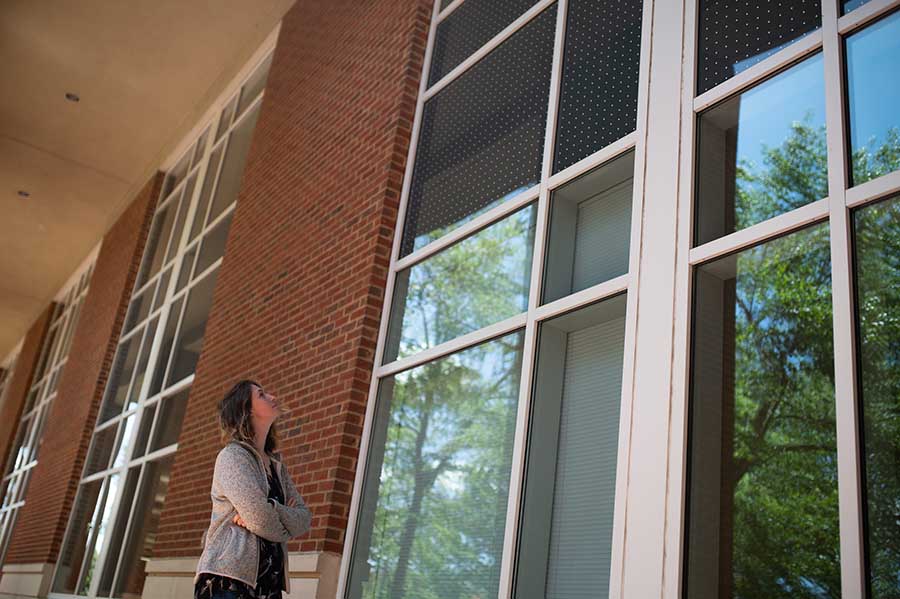
Last spring, students at UNC Charlotte began raising awareness about the second leading cause of bird deaths in North America - collisions with buildings and their squeaky clean glass. An estimated 100 million to one billion birds are killed in the United States each year due to colliding with buildings.
Hannah Partridge, a doctoral candidate in the Department of Geography and Earth Sciences, is co-creator of the UNC Charlotte Audubon Campus Chapter. She’s made it her mission to not only bring awareness to this issue at UNC Charlotte but to impact change.
Sara Gagné, associate professor of landscape ecology, was approached by Partridge regarding the idea of monitoring buildings on campus and getting students involved. By January 2022, bird diversity awareness was incorporated into ecology courses by having students examine buildings around campus for bird collisions.
“This was definitely her brain child,” Gagné said, “She came to me with the idea to monitor bird collisions across campus.”
Gagné’s research showed why birds often run into buildings in Charlotte, North Carolina. Because Charlotte is a suburban area, many buildings have vegetation and greenery next to them, which reflect in the windows. Unable to tell the difference between the reflection and actual greenery, the birds think they can fly through windows, hurting themselves and dying later from their injuries.
There are now 50 undergraduate students assisting in building surveillance and data collection.
Research assistant and UNC Charlotte alumnus, Joe Amodeo ’22, investigated bird collisions under the OUR Summer Research Scholar program in summer 2022.
The data he collected concluded the birds most at risk on campus were American robins, which make up approximately 39% of all reported bird collision deaths.
“The preliminary results while I was completing my research showed a total of 26 bird deaths around campus,” said Amodeo. “Atkins Library was the area on campus with the highest risk.”
Amodeo explained how birds, specifically American robins, contribute to the ecosystem by controlling insect populations.
Partridge wasted no time finding a solution. She first met with the Sustainability Office and facilities management and informed them about bird collisions and their campus impact.
“When I brought this to their attention, they were all for it,” said Partridge. “Working with Atkins Library was just as easy.”
Partridge, Kathryn Horne, Anne Cooper Moore and Mike Lizotte discussed options for installing a bird safe window. For this specific project, they decided installing stickers on the middle 1,400-square-foot window was the best option. The project was funded by the Charlotte Green Initiative through UNC Charlotte, which is a student-led initiative that collects one dollar per semester from full-time students. These funds are used for sustainability projects across campus.
With the stickers recently installed, Partridge looks forward to seeing the positive impact on the birds around Atkins Library and hopes to see more changes around campus. In fact, Partridge and Gagné believe that the campus community can get involved in protecting birds while also enjoying the beauty they create.
“Birds are a beautiful part of our environment and are proven to make people happy and improve mental health,” said Gagné. “They connect us to the natural world and there are easy changes that can be made to our windows.”
Solutions include stickers so that the birds see the glass and LED light strips, which are cost effective, last a long time and use ultraviolet light visible only to birds. Gagné’s new book, “Nature at Your Door” focuses on how city residents are connected to nature and offers 75 practical actions readers can do to conserve nature where they live. If anyone is concerned about a specific building having a lot of collisions, they can report it using the Audubon Campus Chapter’s Google form.
With the help of Partridge and other concerned faculty, staff and students, birds can stay safe one window at a time.